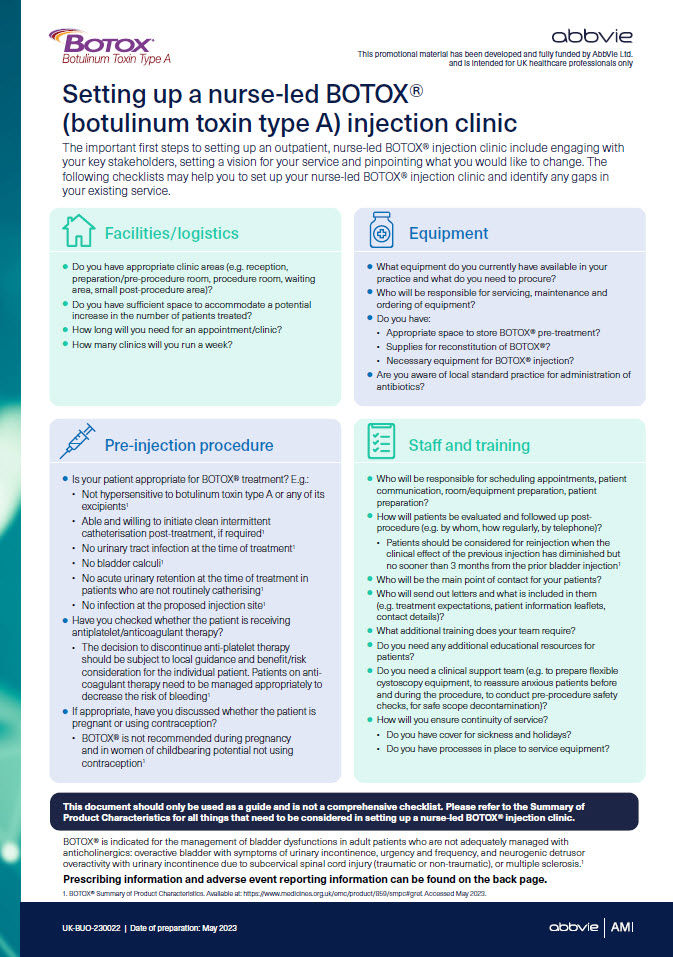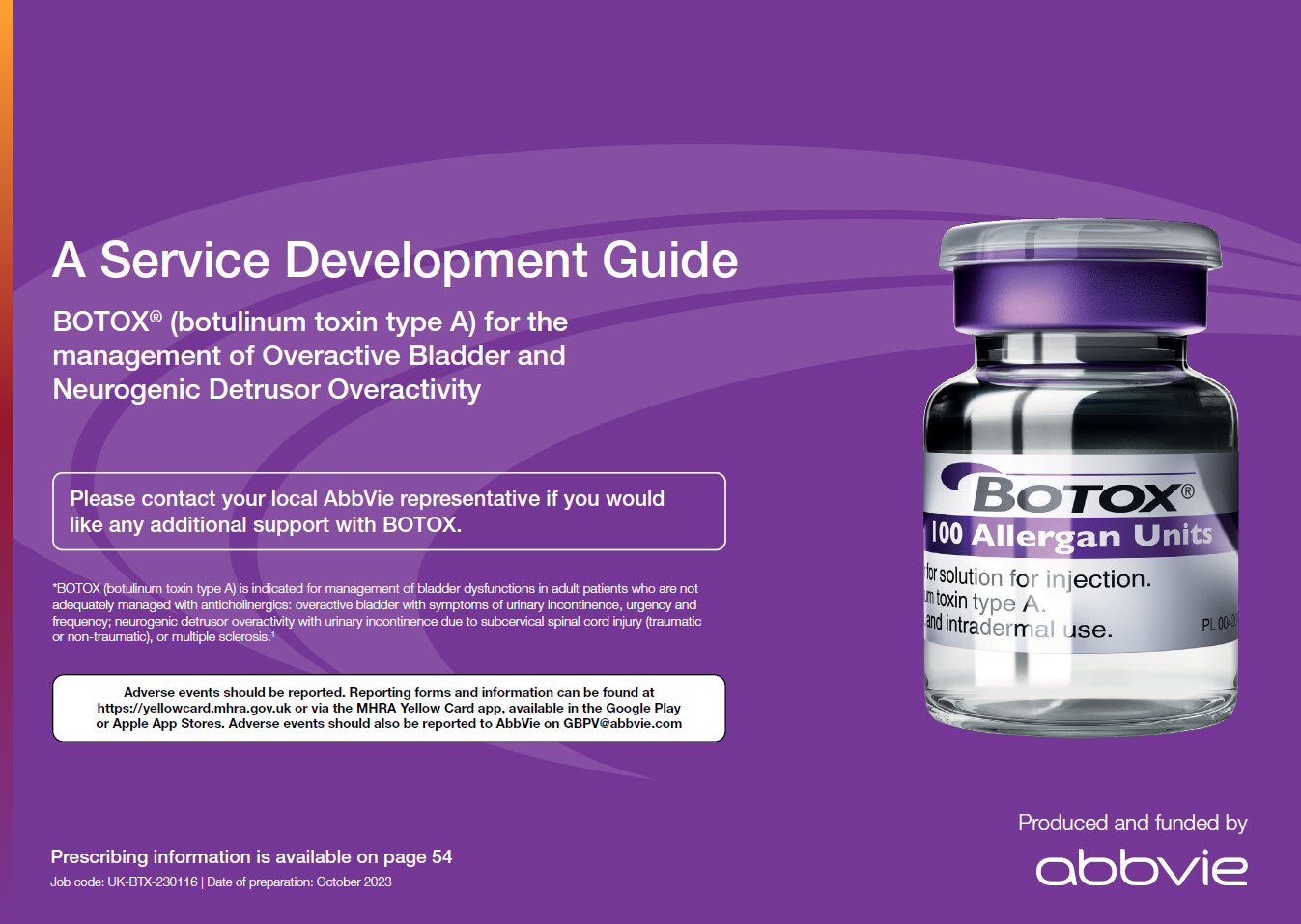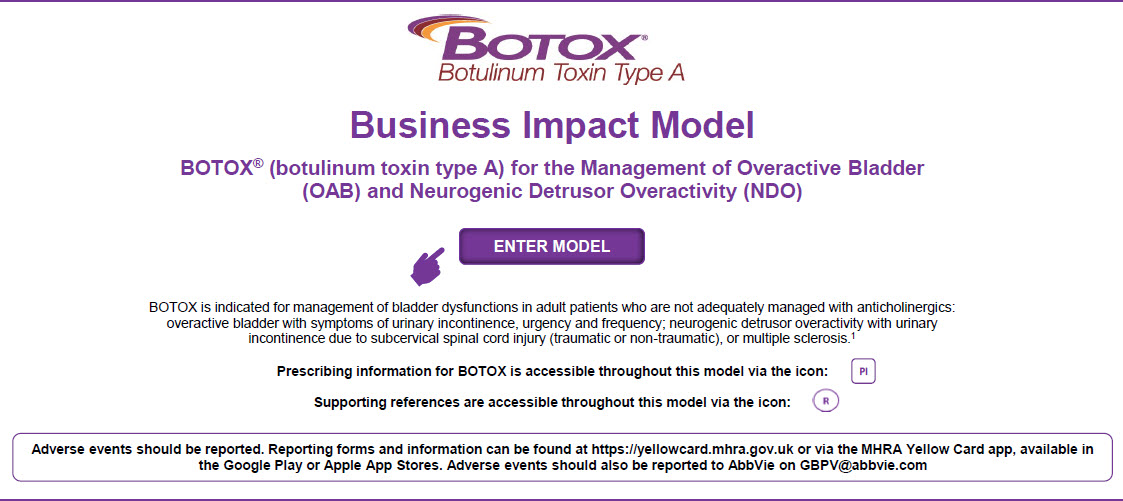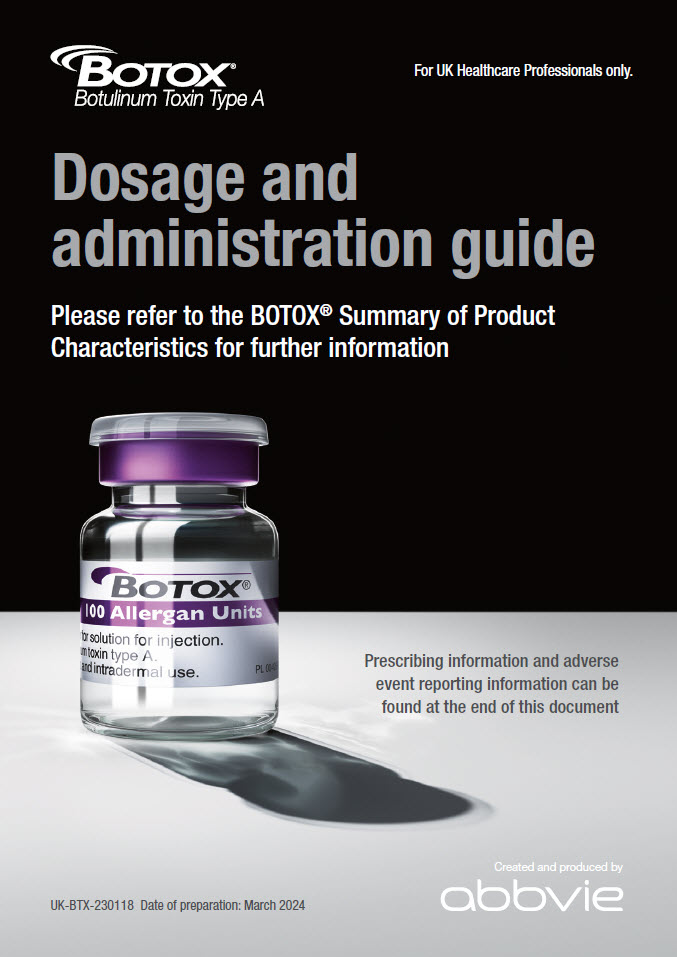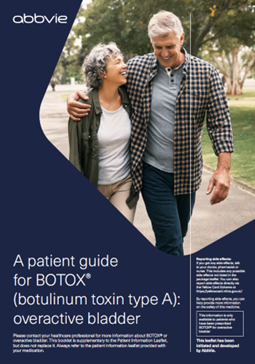This promotional material is intended for UK Healthcare Professionals only.
BOTOX® (botulinum toxin type A) Prescribing Information and adverse event reporting information can be found below.
Resources
For healthcare professionals
Urology nurse resource checklist
This checklist is designed to support healthcare professionals looking to set up a nurse-led clinic, in line with GIRFT (Getting-It-Right-First-Time) recommendations.
To receive a copy of this checklist, please submit your details on the Contact Us page and tick Urology nurse resource checklist.
Urology service development guide
The service development guide provides information and support for healthcare professionals looking to set up or expand an outpatient urology service. It provides information on equipment and resources, staff and training, and facilities and scheduling.
To receive a copy of this guide, please submit your details on the Contact Us page and tick Service development guide.
BOTOX® budget impact model
This planning tool is designed to support healthcare professionals looking to explore the potential budget impact on the clinic, when employing different strategies for service delivery of urology BOTOX® services.
To arrange a meeting to scenario plan with this cost model, please submit your details on the Contact Us page and tick BOTOX® budget impact model
BOTOX® dosage and administration guide.
This guide provides a summary of the dosage and administration for BOTOX® and offers additional useful information on contraindications, injection sites, and recommended treatment intervals.
To receive a copy of this guide, please submit your details on the Contact Us page and tick BOTOX® dosage and administration guide.
Resources for your patients
A patient guide for BOTOX® (botulinum toxin type A): overactive bladder
To support your patients with OAB that have been prescribed BOTOX®, this guide provides information on how BOTOX® works, what patients can expect before and after treatment and any potential side-effects of BOTOX® treatment.
The information in this guide does not replace the Patient Information Leaflet that is included with the prescribed medication.
To receive a copy of this guide, please submit your details on the Contact Us page and tick A patient guide for BOTOX® (botulinum toxin type A): overactive bladder.
A patient guide for BOTOX® (botulinum toxin type A): neurogenic detrusor overactivity
To support your patients with NDO that have been prescribed BOTOX®, this guide provides information on how BOTOX® works, what patients can expect before and after treatment and any potential side-effects of BOTOX® treatment.
The information in this guide does not replace the Patient Information Leaflet that is included with the prescribed medication.
To receive a copy of this guide, please submit your details on the Contact Us page and tick A patient guide for BOTOX® (botulinum toxin type A): neurogenic detrusor overactivity.
NDO: neurogenic detrusor overactivity; OAB: overactive bladder.
Please refer to the BOTOX® Summary of Product Characteristics for further information on adverse events, contraindications and special warnings and precautions for use. The BOTOX® Summary of Product Characteristics can be found here.
By clicking the link above you will leave the AbbVie Pro website and be taken to the eMC PI portal website.
Adverse events should be reported. Reporting forms and information can be found at https://yellowcard.mhra.gov.uk/
Adverse events should also be reported to AbbVie on GBPV@abbvie.com
Date of preparation: June 2025. UK-BUO-250014











